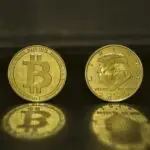Bridging Traditional Finance and Decentralized Infrastructure in 2025
The blockchain industry has always been a playground for innovation—ranging from borderless money to decentralized finance, NFTs, and programmable smart contracts. But in 2025, a new wave is taking center stage: Real World Assets (RWAs).
RWAs refer to tokenized representations of tangible, off-chain assets—like real estate, treasury bills, stocks, commodities, invoices, and more. The concept isn’t new, but the execution is finally catching up with the ambition. Thanks to advances in legal frameworks, compliance tech, and Layer 1 interoperability, RWAs are becoming the next frontier of on-chain capital markets.
This article explores what RWAs are, why they’re growing rapidly in 2025, real-world use cases, and how they’re transforming both TradFi and DeFi ecosystems.
What Are Real World Assets (RWAs)?
At their core, RWAs are digitized versions of real-world financial or physical assets stored and traded on a blockchain. These can include:
- U.S. Treasury Bonds
- Corporate debt or credit instruments
- Real estate holdings
- Carbon credits
- Invoices or supply chain receivables
- Physical commodities (gold, oil, wheat)
- Art and collectibles
These assets are typically represented as tokenized instruments (e.g., ERC-20 or ERC-721 tokens), making them programmable, divisible, and tradable within the DeFi infrastructure.
Tokenizing real-world assets transforms them into liquid, global, borderless financial instruments—accessible to anyone with an internet connection.
Why RWAs Are Exploding in 2025
There are three primary catalysts behind the boom of RWAs this year:
1. Institutional Adoption and On-Chain Treasuries
Institutions are no longer just observing—they’re deploying real capital into tokenized U.S. Treasuries and high-yield credit instruments. Why? Because RWAs offer:
- Higher yield than cash held in TradFi banks
- 24/7 liquidity and settlement
- Transparency and programmable risk management
Firms like BlackRock, Franklin Templeton, and HSBC are actively issuing tokenized securities and investing through on-chain vehicles.
2. Regulatory Maturity and Legal Wrappers
A lack of regulatory clarity was the main bottleneck for RWAs. That has changed. In 2025, jurisdictions like Singapore, Switzerland, Dubai, and the U.K. have introduced clear frameworks for tokenized securities and compliance-grade stablecoins.
Innovations like ERC-3643 (a permissioned token standard) and on-chain identity tools such as KYC/AML oracles enable compliant RWA issuance and trading.
3. Stable Yield in a Volatile Crypto Market
During bear markets, DeFi yields often dry up. RWAs allow protocols to offer sustainable, real-world yield—backed by U.S. bonds or receivables—bringing in yield-hungry users without relying on inflationary token emissions.
Real-World Use Cases of RWAs in 2025
The transformation isn’t theoretical anymore—it’s unfolding across multiple sectors:
1. Tokenized Treasury Bills and Bonds
One of the largest use cases of RWAs is the tokenization of government debt, especially short-term T-bills.
Example:
- Ondo Finance and Matrixdock offer U.S. Treasury-backed tokens like $OUSG and $STBT.
- DAOs and crypto treasuries are parking idle funds in these assets to earn 4–5% APY—while maintaining full custody and transparency.
This essentially creates an on-chain money market backed by the most trusted asset in global finance.
2. Real Estate on the Blockchain
While still developing, tokenized real estate is gaining traction in regions like Southeast Asia, the UAE, and Latin America.
Example:
- RealT, a platform that fractionalizes U.S. rental properties, now offers tokenized shares in Detroit, Cleveland, and Chicago homes. Holders receive rental income as daily stablecoin payouts, directly to their wallets.
- Backed Protocol launched real-estate-backed bonds that comply with Swiss financial law, opening real estate investment to anyone globally.
This democratizes access to traditionally exclusive asset classes—without needing to own or manage property physically.
3. Trade Finance and Supply Chain Receivables
DeFi projects are increasingly tackling invoice financing and SME credit, backed by real-world invoices.
Example:
- Centrifuge connects institutional buyers and crypto liquidity providers to pool capital into receivables from businesses like logistics firms and import/export traders.
- Companies can tokenize their outstanding invoices and use them as collateral to borrow USDC or DAI—unlocking liquidity in days instead of weeks.
In this setup, DeFi acts as the lender, and the off-chain receivables become on-chain collateral.
4. Tokenized Carbon Credits
As ESG investing grows, carbon offsetting via blockchain is emerging as a transparent, traceable solution.
Example:
- Toucan Protocol and Celo’s Climate Collective allow the issuance, trading, and retirement of certified carbon credits on-chain.
- Companies buying carbon offsets can verify the source, quantity, and impact—all recorded immutably on-chain.
This brings environmental accountability and traceability to the forefront of climate finance.
How DeFi Is Integrating RWAs
DeFi protocols are increasingly embedding RWAs into their architecture:
- MakerDAO holds billions in real-world collateral (like U.S. Treasuries) to back the DAI stablecoin.
- Aave’s RWA Market enables permissioned investors to earn yield from tokenized bonds and credit.
- Maple Finance lends to off-chain fintechs and enterprises using on-chain RWA structures.
This shift signals a blending of TradFi and DeFi, where protocols act more like digital private banks than experimental yield farms.
Risks and Challenges in RWA Adoption
While RWAs are booming, they’re not risk-free. Challenges include:
- Custodial Risk: Most tokenized RWAs rely on centralized custodians to hold the underlying assets. If a custodian fails or mismanages funds, token holders may lose their stake.
- Regulatory Arbitrage: Some issuers operate in unclear legal zones. While innovation thrives there, future regulation could invalidate certain models.
- Liquidity Fragmentation: Many RWAs are siloed across permissioned pools or whitelisted participants, limiting secondary market depth.
- Oracle and Data Risk: Bridging off-chain events to on-chain records (e.g., repayment, default, or ownership change) requires trusted oracles and real-world attestations.
Addressing these risks will require better infrastructure, standardized legal wrappers, and smart regulation that balances innovation with protection.
What’s Next for RWAs?
In 2025 and beyond, RWAs are expected to evolve from niche products to core primitives in the crypto ecosystem:
- RWA Money Markets will emerge as reliable yield sources, potentially overtaking traditional DeFi staking models.
- Cross-chain interoperability will enable RWA tokens to flow across Ethereum, Solana, Cosmos, and modular chains like Celestia or LayerZero.
- AI and RWA convergence may automate credit scoring, risk analysis, and asset verification for on-chain credit markets.
- Retail investing apps will allow users to earn stable yield on tokenized bonds without ever touching a brokerage account.
This convergence of traditional assets with decentralized technology creates a powerful paradigm: programmable finance grounded in real value.
Conclusion
Crypto has long promised to reinvent finance, but real-world adoption has often lagged due to volatility, complexity, and lack of trust. Real World Assets flip the equation—bringing trustworthy, productive assets onto the blockchain. Whether it’s a DAO earning yield on Treasury bills, an SME unlocking cash flow from invoices, or a retail investor owning fractional real estate—RWAs are bridging the gap between the digital and physical economies.
In 2025, this bridge is no longer under construction. It’s open, scalable, and already transforming how capital flows globally.





